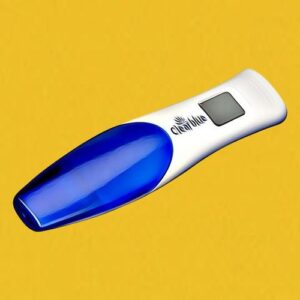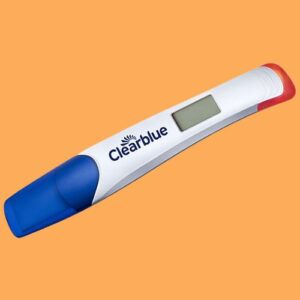The coil is a popular contraceptive device. Its proper name is not quite as catchy, it’s the IUD, which stands for intrauterine device. The coil is a common and effective contraceptive method used by loads of women in the UK. Big question – can you still get pregnant while using the coil?
What Is the Coil?
The coil is a tiny, T-shaped device made of copper and plastic that is inserted into the uterus by a doctor or nurse. It works by releasing copper to stop sperm reaching and fertilising the egg, as well as delaying the egg entering the womb.
Once fitted, the coil can remain in place and provide continuous contraceptive protection for 5-10 years, depending on the type. The NHS says it can be fitted at any point during your menstrual cycle, as long as you are not already pregnant.
How Does the Coil Prevent Pregnancy?
The presence of the coil and copper changes the environment inside the uterus, which prevents pregnancy in a few key ways:
- The copper is toxic to sperm and damages them, preventing fertilisation
- It thickens the cervical mucus which blocks and traps sperm
- It thins the uterine lining, preventing implantation of a fertilised egg
The coil does not protect against sexually transmitted infections (STIs), so additional contraception like condoms may be needed.
How Effective Is the Coil?
The coil is over 99% effective at preventing pregnancy, according to the NHS. This makes it one of the most reliable reversible methods of contraception available.
However, it is still possible, but rare, for pregnancy to occur with the coil in place. This happens if the device moves out of position, gets expelled from the uterus, or was not fitted properly in the first place.
While the coil is highly effective, it’s crucial to understand that no contraceptive method is 100% foolproof. If you’re using the coil and suspect you might be pregnant, don’t panic! Look out for early signs like missed periods, breast tenderness, or nausea. Taking a home pregnancy test is a good first step, but remember that false negatives can occur early on. If you get a positive result or have ongoing symptoms, book an appointment with your GP straight away. They’ll confirm the pregnancy and check if the coil is still in place. In the rare event of pregnancy with a coil, there’s a slightly higher risk of ectopic pregnancy, so prompt medical attention is essential.
Checking Your Coil Is in Place
You can check your coil is still in the correct position by feeling for the thin plastic threads that hang down through the cervix into the vagina. Your nurse will show you how to do this after fitting.
It’s recommended to check after each period, especially during the first few months. If you cannot locate the threads, you may not be protected against pregnancy. See your doctor immediately to investigate further.
The Benefits of the Coil
There are many advantages to using the coil as your contraceptive method:
- It is over 99% effective and provides very reliable long-term protection.
- Once fitted, you do not have to remember to take or use anything for up to 5-10 years.
- It does not affect or interact with any other medicines you might be taking.
- Normal fertility returns very quickly after removal.
- It does not interrupt sex.
- There are no hormonal side effects.
- It is safe to use when breastfeeding.
The Potential Disadvantages
There are a few things to be aware of when using the coil:
- Periods may get heavier, longer or more painful, especially in the first 3-6 months. This usually settles down.
- It does not protect against STIs, so additional contraception may be required.
- A small chance of getting an infection or damage to the womb during fitting.
- Risk of the coil being rejected from the uterus or moving position.
What Are the Risks?
As with any medical procedure, there are some small risks to be aware of:
- Pelvic infection – rare in the first 20 days after fitting
- Rejection – uncommon but the coil can be expelled by the womb
- Uterine perforation – very rare chance of damage to the uterus during fitting
- Ectopic pregnancy – rare if the coil fails, but serious if it occurs
- Changes to periods – likely to become heavier and more painful initially
Getting Your Coil Removed
Only a trained doctor or nurse should remove your coil, if and when you decide you want it taken out. You will need to book an appointment for this quick procedure. Fertility returns to normal very quickly afterwards.
In Summary
The coil is a highly effective long-acting reversible contraceptive that provides excellent protection against pregnancy for 5-10 years. While rare, pregnancy can still happen if the coil moves out of place or is rejected. Checking your coil is in the right position is important. Be aware of the small risks, but for most women the coil is safe and very reliable.
Photo “Hospital” by Anthony Cunningham for Zoom Baby
Zoom Baby is a leading supplier of Pregnancy Tests and Ovulation Test Kits





